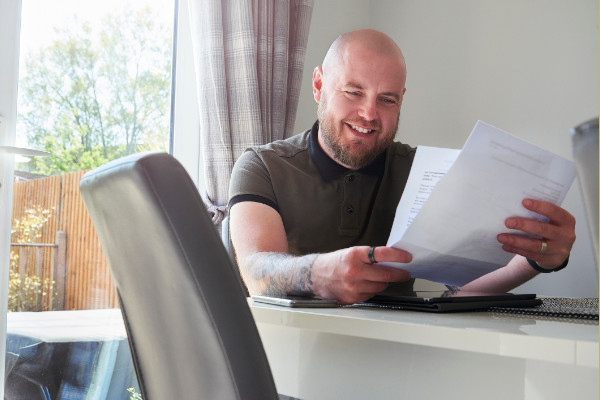Getting (and Staying) Debt Free in 4 Steps

Let’s consider some facts. About a third of all Americans only pay the minimum amount due on their credit cards every month1, and a staggering 35% of Americans have had their credit card debt in collections2 at some point in their lives. So it’s no surprise that more than half of Americans admit to being financially anxious. Fortunately, this anxiety is avoidable, and that’s why we’re devoting this post and the second week of Financial Literacy Month to helping yo1u understand your debt and how to manage that debt in ways that are productive and not destructive.
- Understand your total indebtedness.
It can be a tough process, but write down everything you owe and are repaying. As you review your statements and bills, record the dollar amount due each month, as well as how much interest you’re paying. It’s also a good idea to request a credit report to make sure you are aware of all outstanding debts. Finally, calculate how much you owe on a monthly basis. It may sound simple, but it’s a basic fact that most people don’t know and will be key for you as you move towards being debt free. - Come up with a smart repayment plan.
Now that you know how much you owe, it’s time to figure out how much you can afford to repay every month. More than simply comparing how much you owe with how much you make, you should have a firm strategy moving forward. Start by paying off debt with the highest interest rates working your way down. At the same time, look for additional ways to save money. Whether it’s cutting out unnecessary expenses or getting a side gig, paying down your debt faster should be your top priority. - Consolidate and/or reduce rates.
If you’re mostly paying down credit card bills then you’re probably paying fairly high interest rates. First, call your lender and see if they’ll work with you on a new interest rate, either permanently or temporarily as you try to pay things off. If that doesn’t work out, there are a number of credit cards with lower rates to which you could transfer your existing balances. Another option if you’re a home owner could be a home equity line of credit or a home equity loan, which have much lower rates than credit cards. - Plan for the future.
It’s not easy getting out of debt, so consider meeting with a financial adviser who can help as you fine-tune your plan. More than that, it’s also key to change your habits. Avoid taking on any new debts and avoid the temptation of using newly freed up credit. Together with professional advice and your dedication to getting and staying debt free, you’ll be able to get there much faster than you could ever have imagined.
Tools
- Debt Consolidation Calculator »
- How Long Will it Take to Pay off a Debt Calculator »
- Meet a Debt Payoff Goal Calculator »
Visit the $tation for debt management suggestions. »
Questions? Contact us today at 800.399.5919 or visit a Sandy Spring Bank branch near you to discuss your banking needs.
Sources:
2Bankrate Survey
This publication does not constitute legal, accounting or other professional advice. Although it is intended to be accurate, neither the publisher nor any other party assumes liability for loss or damage due to reliance on this material.